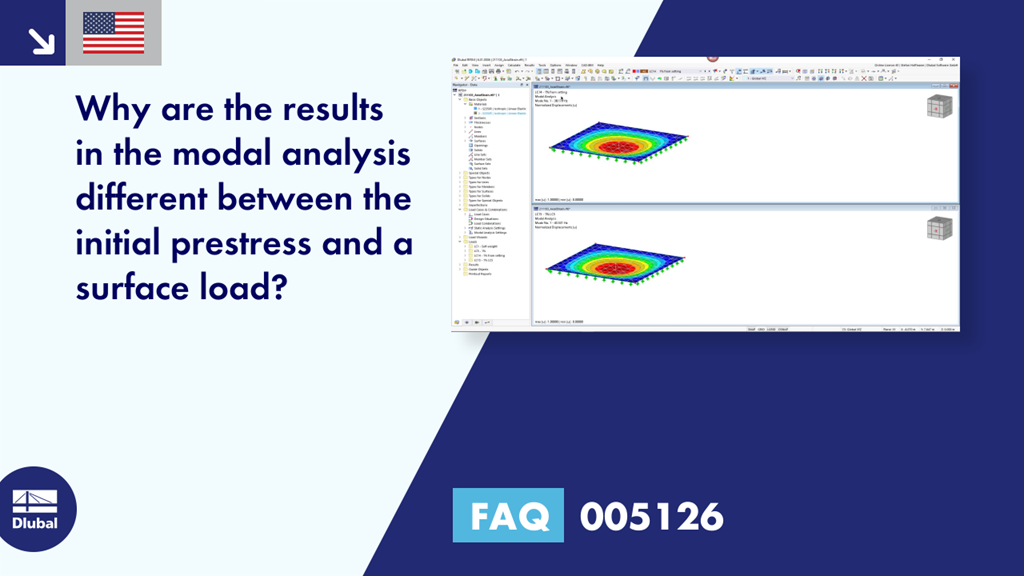Question:
Why do the results in a modal analysis differ between the initial prestress and the surface load?
Answer:
In the modal analysis settings, you can set the minimum axial strain for cables and membranes in order to apply an initial prestress to the objects and thus improve the convergence of the calculation. The initial prestress is applied to the objects in a simplified approach.
If you compare this setting with a surface load of the Axial Strain load type, you should pay attention to the fact that the two approaches differ. With the surface load, you perform a calculation in such a way that the actual prestress can deviate from the specified prestress. The calculation also takes into account other boundary conditions, such as the Poisson's ratio of the material.
You can easily check this if you vary the Poisson's ratio of the material. A Poisson's ratio other than 0 causes the deformation to interact in the x- and y-directions of the surface, which no longer results in a constant stress/strain over the entire surface.
If the Poisson's ratio is 0, you obtain the same results.
